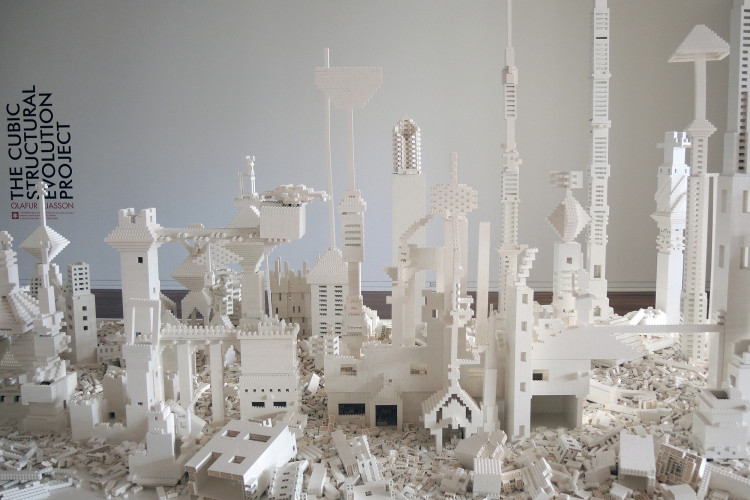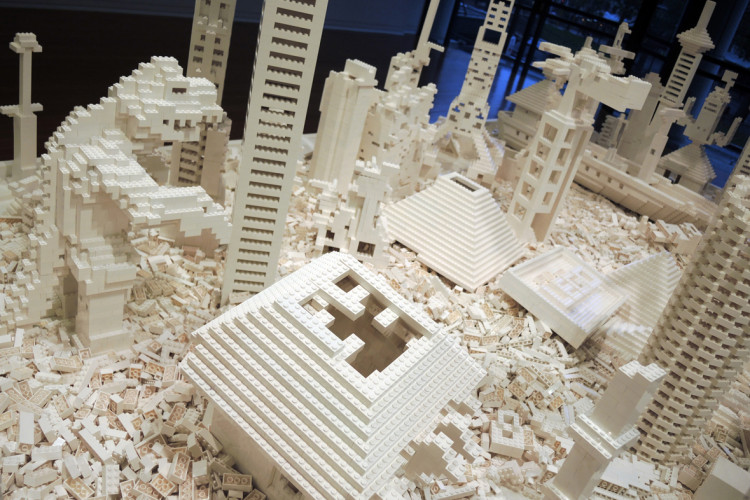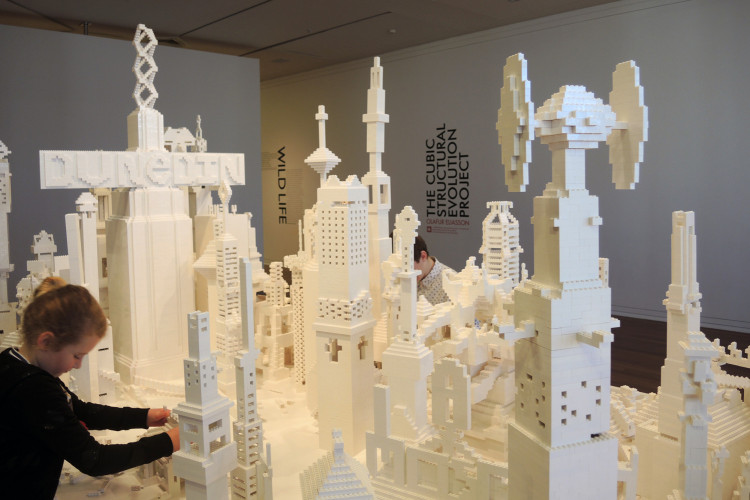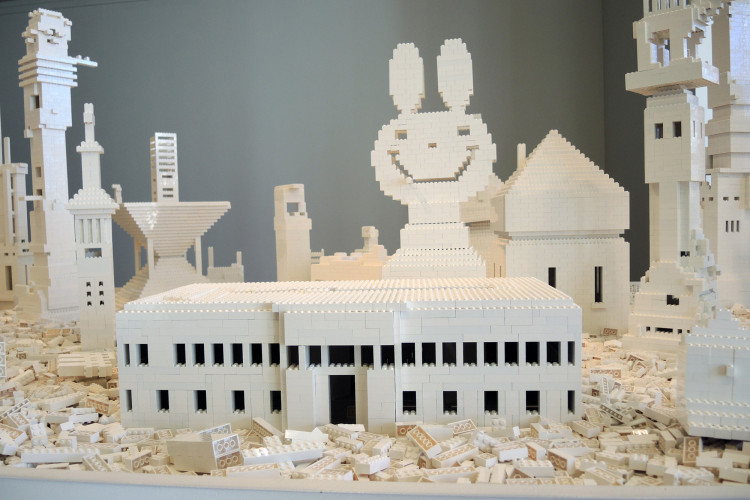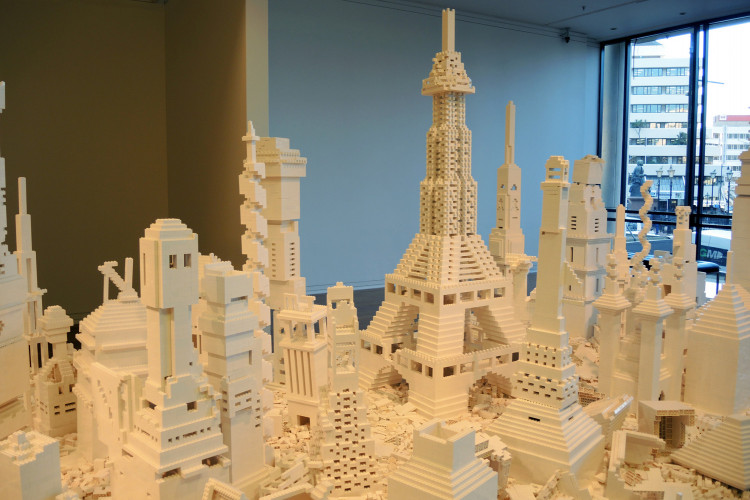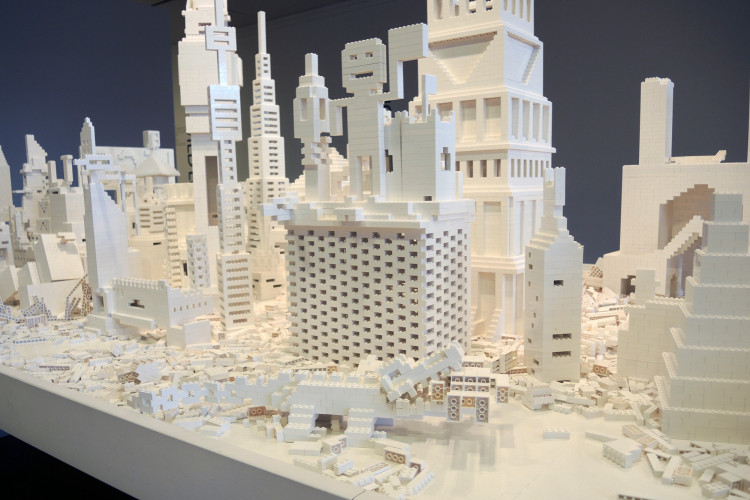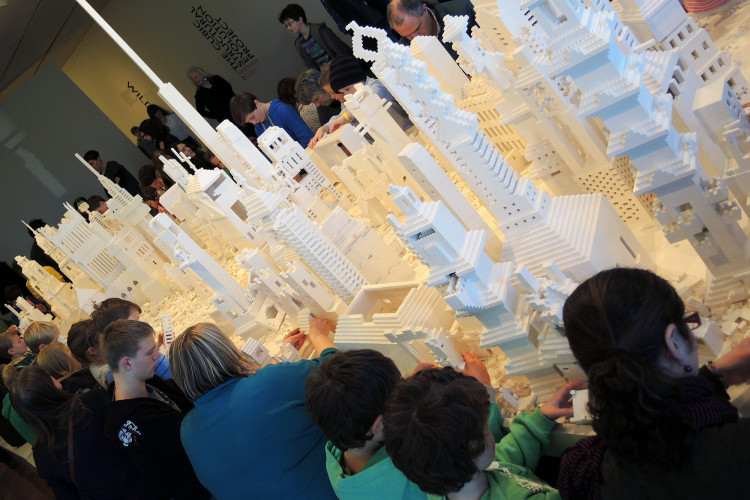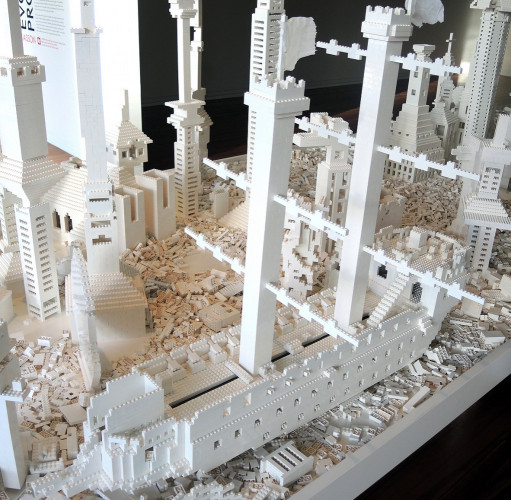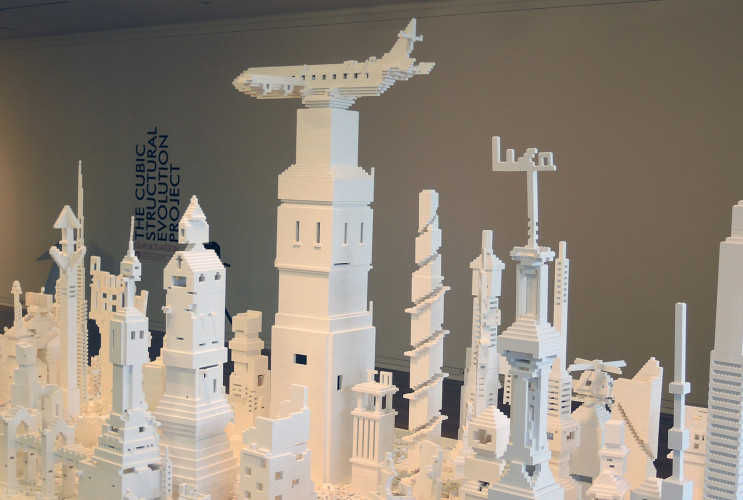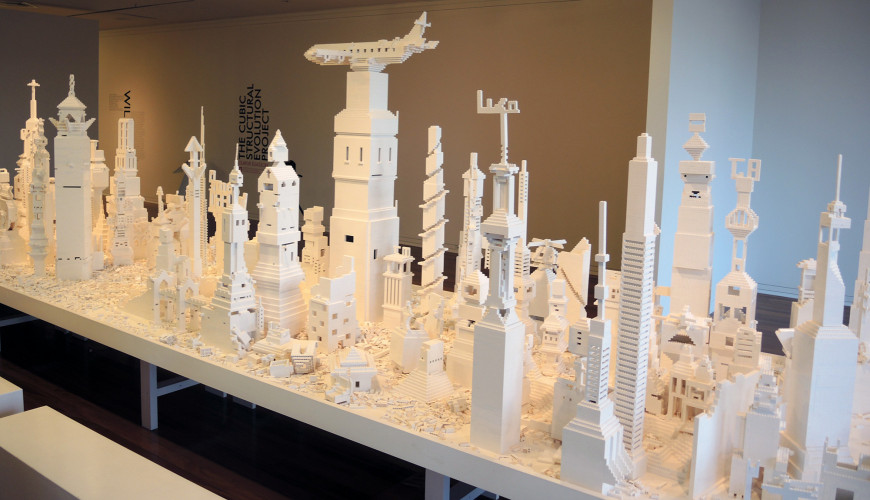Olafur Eliasson
The Cubic Structural Evolution Project
3 May 2014 - 3 August 2014
In this exhibition by the Danish artist Olafur Eliasson, thousands of white Lego bricks await an audience to transform them into art. Eliasson has constructed an environment of participation and calls on gallery visitors to actively produce this exhibition with their own imagination. The project centers on the individual and their own collaborative power; they are both ‘the artist’ as well as only one of many parts that make a whole.
Olafur Eliasson’s [b. 1967 Denmark] consideration of how people perceive and experience the world around them is at the heart of his artistic practice. His highly acclaimed photographs, sculptures and installations explore the various relationships between nature and technology, perception and reality, the individual and the environment. One work that epitomises this interest in the structure and formation of environments, and the role of individuals within that, is the cubic structural evolution project.
An interest in his Danish history, with a particular focus on socialism, is ever-present in his work; here Lego is used as both an artistic medium and tool for social commentary. This popular construction toy takes its name from the Danish phrase leg godt, which means ‘play well’ and despite changes in design and purpose of individual parts, this universal system of building blocks has remained compatible with the very first pieces manufactured in 1949.
For this project, Eliasson has created a minimal and entertaining site that encourages a very direct level of engagement. Thousands of white Lego bricks, scattered on an eight metre long white table, awaits an audience to transform it into a work of art. Participants are invited to actively guide and shape a section of the work as it spontaneously materialises over the duration of its installation. As more people add their contribution to the project it will grow larger, more complex and unruly. Here, gallery visitors are simultaneously ‘the artist’ and yet also one of many parts of this creative social system.
With a simple material and lots of imagination the viewer assumes the role of architect – there are limitless possibilities to create a skyscraper, a cottage, a castle or even your family home. Ultimately, the exhibition itself becomes about the people who make it. A viewer may start from scratch or continue with a partially constructed piece left behind from a previous ‘builder’. From a pile of plastic rubble a diverse and ever-changing cityscape will surface.
